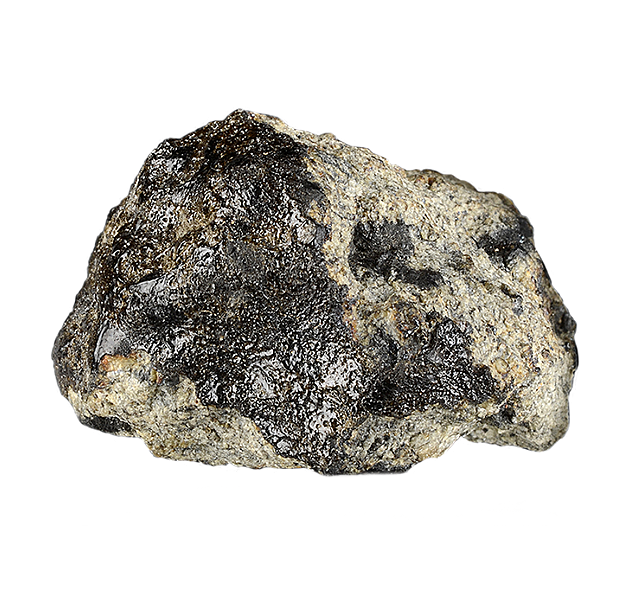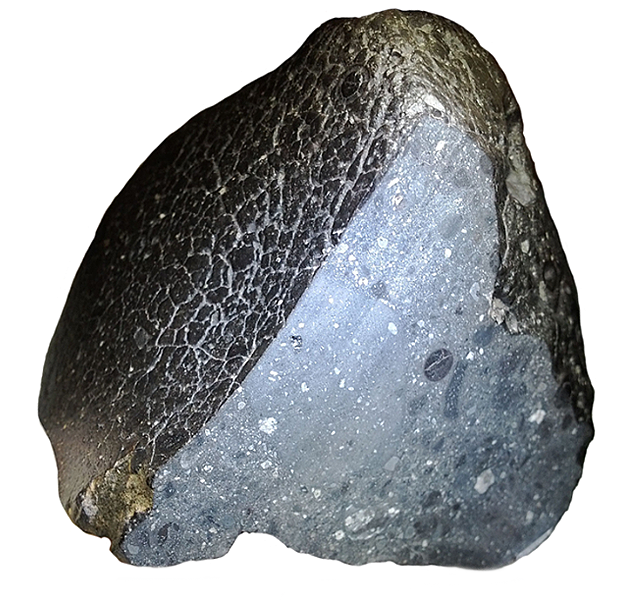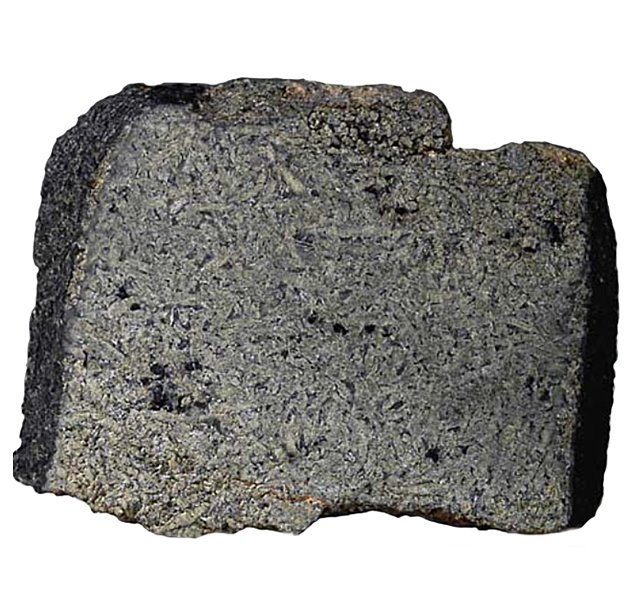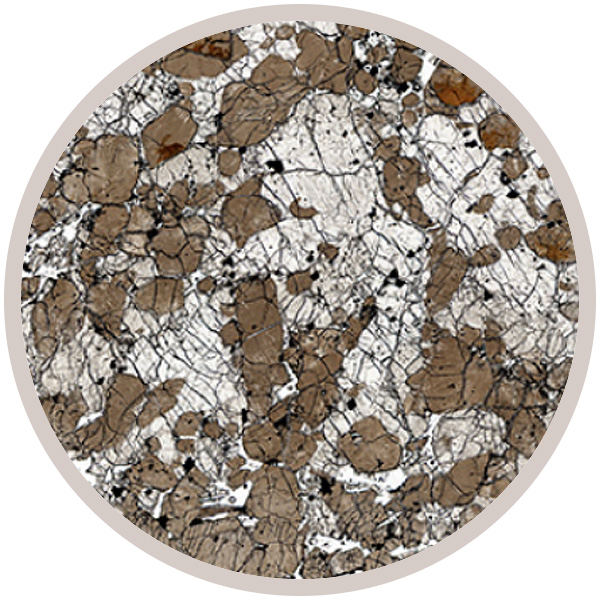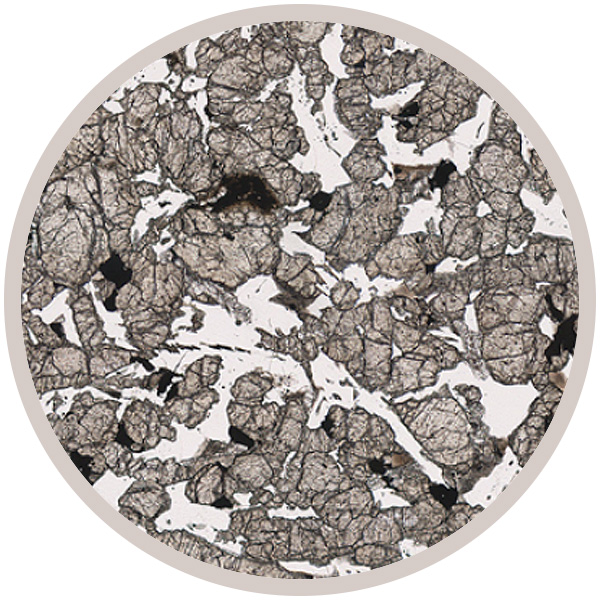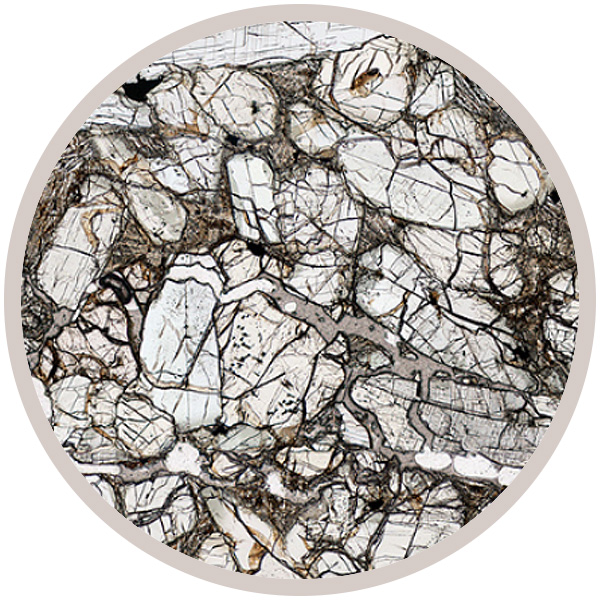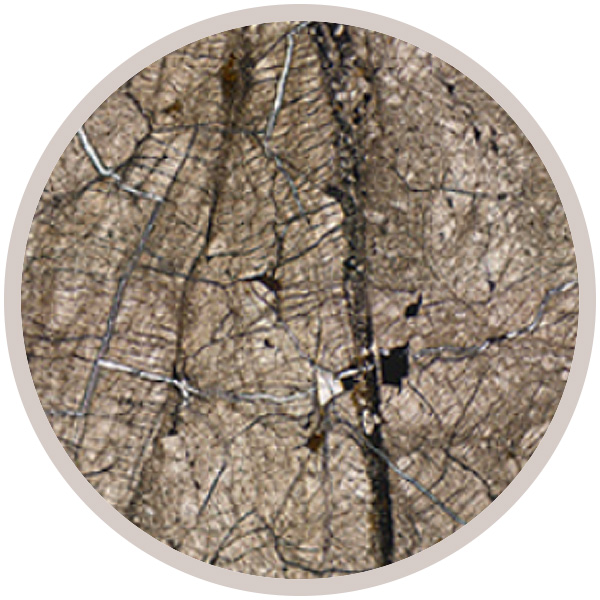
Fact sheet
ALH84001 was found by geologist Bobbie Score during a snowmobile ride on December 27th, 1984 in the Far Western Icefield of Allan Hills. It was recognized as a most unusual rock, and was the first Antarctic meteorite to be processed from the 1984-5 field season. Field notes describe it as a highly shocked greyish-green achondrite with a 90% fusion crust. Where the fusion crust had spalled away the interior showed a uniform coarse-grained rock with a blocky texture. Preliminary laboratory investigations revealed the sample had a “shocked appearance” and patches of brown iron-rich carbonate were noted. At this time the sample was classified as a diogenite. It was only six years later that its true identity would be recognized, when electron microprobe analysis established it was a SNC meteorite and hence potentially of Martian origin (SNC is an acronym for three meteorites believed to have originated on Mars - Shergotty, Nakhla and Chassigny). Further evidence of a martian origin for ALH84001 comes from the chemical composition of gases inside black beads of glass-like material (maskelynite) that had bubbled up when the rock was ejected from Mars by a violent shock. The gases matched the Martian atmosphere as measured by the Viking space craft which sampled the atmosphere in 1976.
Location: Victoria Land, Antarctica
Find or Fall: Find
Date: 1984
Recovered weight: 1930.9 g
Group: SNC
Weathering grade: A/B
This collection of meteorites includes Shergottites, Nakhlites and Chassignites (or SNC meteorites) which originate from the surface of the planet Mars.
They carry unique signals of the surface of the planet that allows scientists to study the composition and age of Martian rocks. The collection includes a sample of the famous ALH84001 meteorite, evidence from which was used in 1996 to begin the debate of 'life on Mars?'.

